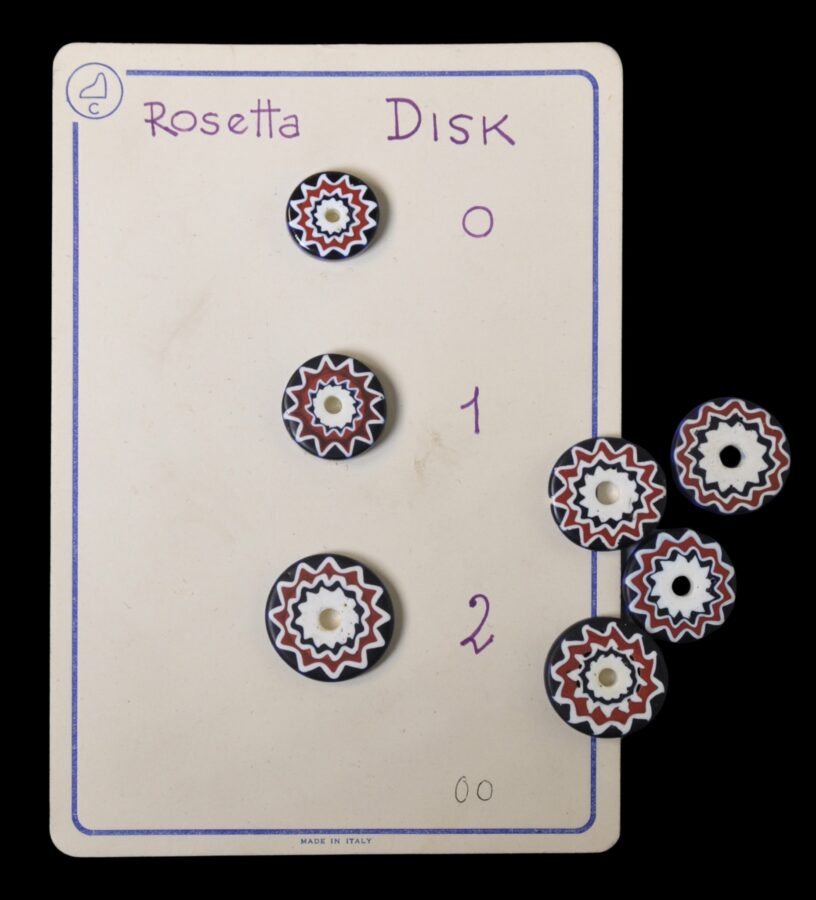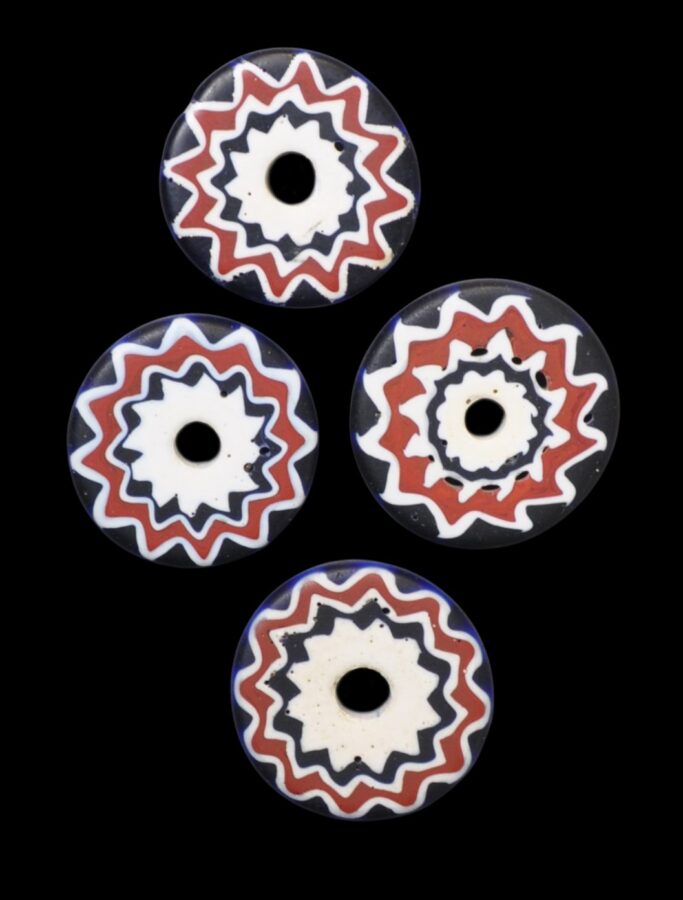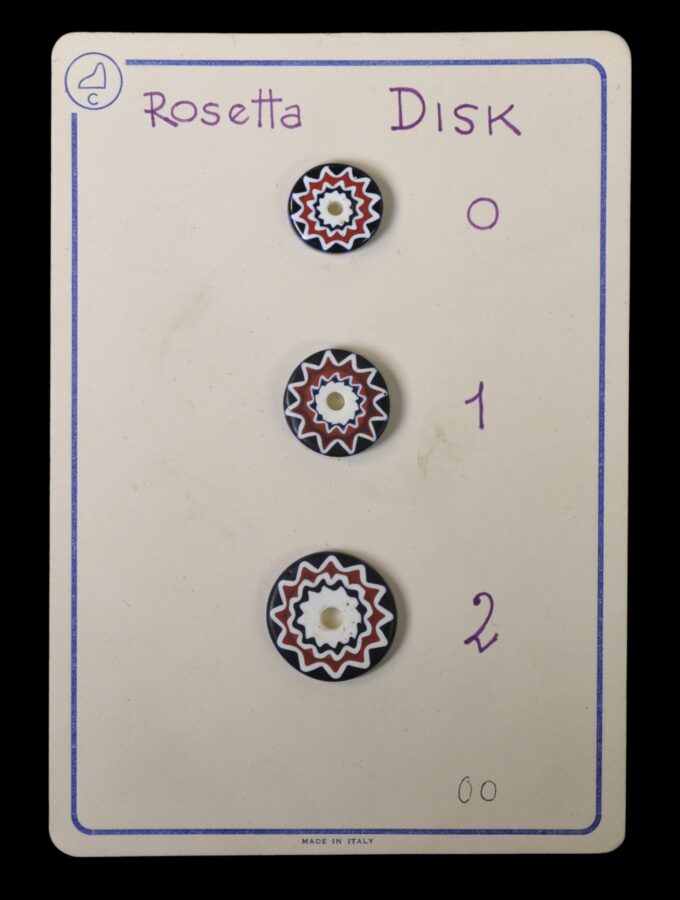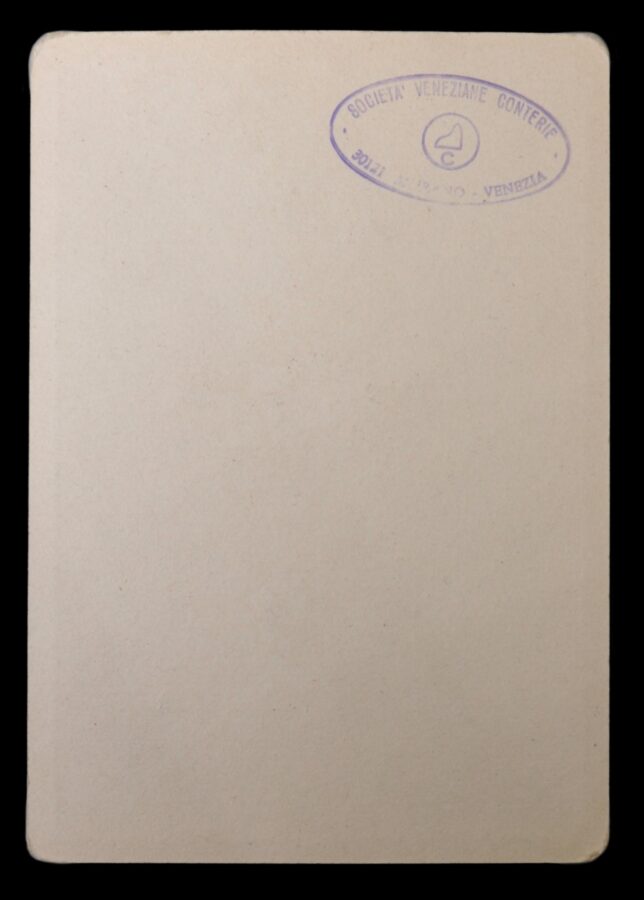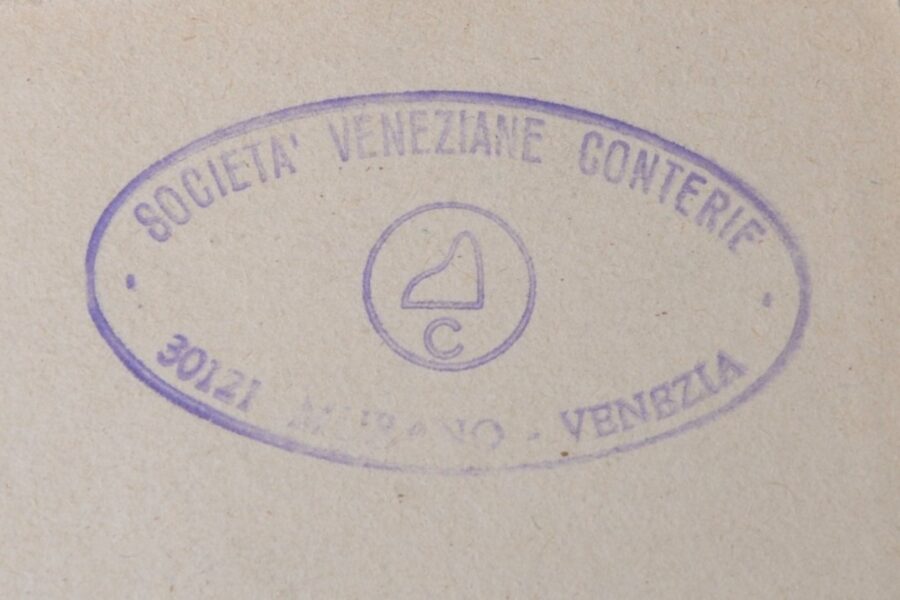Enquiry about object: 9806
Venetian Chevron Slice Trade Beads & Original Sample Card for the Società Veneziana Conterie
Murano, Venice, for the export market 1920s-1950s
diameter of the largest bead: 2.8cm, overall weight (including card): 62g
Provenance
private collection, Canada. The collection was carefully assembled over the last 50 years.
This selection of four Venetian chevron or rosetta bead ‘slices’ or disks is accompanied by an original Venetian sample card for the Murano-based glass bead producer the Società Veneziana Conterie. (A stamp for the Società Veneziana Conterie is on the reverse of the card).
The Società Veneziana Conterie was formed by a number of companies in Murano in Venice that produced glass beads when they combined in 1898. This new entity which operated from the heart of Murano closed in 1993, but at its height employed more than 3,000 workers.
Each of the beads here is well matched and has six layers of red, white and blue glass.
‘Six-layer’ chevron beads were produced in Venice from the early 19th century largely for the new colonies established by Europeans in Africa. ‘Six-layer’ chevrons were regarded as the chevron beads that attained the most splendour, with impeccable cut and colour (Panini, 2008, p. 177).
The beads here have been made from slicing larger chevron beads so that the full beauty of the rosette pattern can be seen in the cross section.
Chevron beads were first created in Venice around 1500. They were made for the next 500 years. They involved fusing layer upon layer of different coloured glass over a core and then grinding and polishing the resulting bead back to reveal a striped pattern on the sides and a star pattern on the ends. Chevron beads were one of the great trade bead exports from Venice. Their quality varied significantly. West Africa was once of the main markets for the beads, where they were highly prized by different tribes and particularly the Kuba people in the Ivory Coast. Often the beads were incorporated into the necklaces of local chiefs and often were included in royal treasuries. Nigeria, Mali, Congo and Guinea were other important markets.
Fisher (1987, p. 61) illustrates a Dinka elder in Sudan who claimed that the old Venetian chevron beads in his necklace were ‘a gift from God’. Fisher mentions that such beads are rare in East Africa and had probably been traded in from West Africa.
In addition to West Africa, early on, the beads were exported to South America and Java in Indonesia.
The chevron slice beads here are in fine condition. The sample card is a fine, historical addition.
References
Borel, F., The Splendour of Ethnic Jewelry: From the Colette and Jean-Pierre Ghysels Collection, Thames & Hudson, 1994.
Fisher, A., Africa Adorned, Collins Harvill, 1987.
Leurquin, A., A World of Necklaces: Africa, Asia, Oceania, America from the Ghysels Collection, Skira, 2003.
Panini, A., Middle Eastern and Venetian Glass Beads: Eighth to Twentieth Centuries, Skira, 2007.
Sherr Dubin, L., The Worldwide History of Beads, Thames & Hudson, 2009.


